A History of the County of Hampshire: Volume 3. Originally published by Victoria County History, London, 1908.
This free content was digitised by double rekeying. All rights reserved.
'Parishes: Corhampton', in A History of the County of Hampshire: Volume 3, ed. William Page( London, 1908), British History Online https://prod.british-history.ac.uk/vch/hants/vol3/pp246-254 [accessed 24 November 2024].
'Parishes: Corhampton', in A History of the County of Hampshire: Volume 3. Edited by William Page( London, 1908), British History Online, accessed November 24, 2024, https://prod.british-history.ac.uk/vch/hants/vol3/pp246-254.
"Parishes: Corhampton". A History of the County of Hampshire: Volume 3. Ed. William Page(London, 1908), , British History Online. Web. 24 November 2024. https://prod.british-history.ac.uk/vch/hants/vol3/pp246-254.
In this section
CORHAMPTON
Quedementune (xi cent.); Cornhampton (xiii cent.); Corhamtone, Cornhamtone and Cornehampton (xiv cent.); Corehampton (xvi cent.).
The parish of Corhampton on its western side consists of wide stretches of wooded common and down land, standing about 300 ft. above the ordnance datum, and falls to a little under 200 ft. towards the River Meon and the village on its eastern border. On 24 March, 1894, part of Corhampton parish, with a population of forty-seven, was transferred to the parish of Exton. (fn. 1) This portion lay to the north-west, and included the whole of the wooded downs of Preshaw Park, and also the little farm of Lomer, which no doubt marks the site of the manors of Lomer and Lomer Turville. The small village of Corhampton lies in the valley of the Meon River, in the extreme east of the parish, the river forming the boundary. The nearest station is in the adjoining parish of Droxford. The main road from West Meon to Droxford runs through the village from the north-east, crosing the rivers just below the mill and close to the church and vicarage. A little further on it divides, one road going westward to Bishop's Waltham, and the other eastward to the village of Meonstoke, and so to Droxford. The church stands on a little mound on the right-hand bank of the stream, the churchyard lying to the south, and containing a yew-tree 26 ft. in circumference. To the north of the church and at the back of the mill is a group of half-timber cottages, probably of early seventeenth-century date. The oldfashioned vicarage in its shady grounds stands opposite the church on the east side of the road, the stream forming the eastern boundary, while the wooded grounds of Corhampton House, the residence of Mrs. Pleydell Bouverie-Campbell-Wyndham, occupy the angle between the Droxford and Bishop's Waltham roads. The area of the parish is 1,246 acres. (fn. 2) The soil is chalk and loam, the subsoil chalk, stone, and flint. The chief crops are oats and barley.
As early as the fifteenth century there is mention of 'the tenement called Seynclers,' (fn. 3) no doubt representing the modern St. Clair's Farm, which is situated in the north of the parish. It seems generally to have been leased to the farmer of the chief manor of Corhampton, who was entitled to have reasonable housebote, hedgebote, and firebote in St. Clair's Wood. (fn. 4) The following place-names in Corhampton are found in a fine levied in the reign of Henry III (fn. 5) : 'Lide, Frilande, Norlehe, and Freecroft.' In the fourteenth and fifteenth centuries the following place-names occur: 'La Hethen Street and Butmesfeld, (fn. 6) Stanbury, La Gores, Abbotesheuedacre, Baroneshurne, Haselholte, and Hackedwode' (fn. 7); a wood called 'Stene' (fn. 8) 'Pulter's Pasture (fn. 9); Deneyslonde and Wakelens.' (fn. 10)
MANORS
In the reign of Edward the Confessor CORHAMPTON was assessed at three hides, and was held by Alwin, but by the time of the Domesday Survey it was assessed at only one hide, and formed part of the possessions of Hugh de Port. (fn. 11) If the statements made on the occasion of levying of subsidies in 1346 and 1428 are to be relied on, the manor was at one period in the hands of a Geoffrey the Marshal. (fn. 12) It is possible that this Geoffrey was Geoffrey the Marshal of the twelfth century, although there is no definite evidence of this; and, if so, he must have succeeded Alwin in the tenancy of the manor, the overlordship continuing with the St. Johns, the descendants of Hugh de Port, as late at least as the fifteenth century. (fn. 13) In 1228 two carucates of land in Corhampton, probably representing the manor, were settled on Adam de Corhampton by Gilbert de Hattingley. (fn. 14) Adam had died before 1233, for in that year Basile, the widow of Adam de Corhampton, was holding tenements in Corhampton in dower. (fn. 15) His heir was Nicholas de Corhampton, (fn. 16) who in the same year granted the third part of the two knights' fees which he was then holding in Corhampton to his nephew, Adam de Corhampton, the son of his brother Richard. (fn. 17) From Nicholas the remaining two-thirds must have passed soon afterwards to William de Clare, (fn. 18) brother of Richard de Clare, earl of Gloucester and Hertford, who in addition in 1256 acquired from William de Moleyns and Sarah his wife a messuage, lands, rents and a mill in Corhampton in exchange for tenements in Mapledurham. (fn. 19) On the death of William de Clare without issue in 1258, his property passed to his brother Richard, who was seised of the manor of Corhampton at the time of his death four years later. (fn. 20) He was succeeded by his son and heir Gilbert de Clare, earl of Gloucester and Hertford, who in 1289 married Joan de Acres, the king's daughter. (fn. 21) Gilbert died in 1295 seised of certain lands and tenements, including probably the manor of Corhampton. (fn. 22) Two years afterwards Joan de Acres married clandestinely Ralph de Monthermer, a plain squire, (fn. 23) which incensed the king, who imprisoned his new son-in-law in Bristol Castle. In 1305, however, he granted him the custody of the late earl's lands in Corhampton during the minority of Gilbert the son and heir. (fn. 24) Joan de Acres died in 1307 seised of the manor of Corhampton, held of John de St. John by the service of two knights' fees. (fn. 25) In 1313 Gilbert de Clare, earl of Gloucester and Hertford, granted to Gilbert de St. Owen and Joan his wife the manor of Corhampton, with reversion in default of heirs to Earl Gilbert. (fn. 26) However, the young earl was slain at Bannockburn, 24 June, 1314, (fn. 27) and since he died without issue his property was divided between his sisters and co-heirs Eleanor and Margaret. (fn. 28) Corhampton, however, remained with the widow of Gilbert de St. Owen, who was holding in 1316, (fn. 29) and it was not until her death without issue that the manor was assigned to Margaret. The latter was married to Hugh de Audley, who assumed the title of earl of Gloucester in right of his wife. (fn. 30) Their only daughter and heir Margaret married Ralph second Lord Stafford, (fn. 31) and brought him the manor of Corhampton among other possessions. The manor remained with the Staffords till 1521, (fn. 32) when Edward Stafford, third and last duke of Buckingham, was attainted of treason and beheaded and his estates were forfeited. (fn. 33) In March of the following year Henry VIII granted Corhampton to Sir Richard Weston in tailmale. (fn. 34) Francis Weston, son and heir of Richard, one of the alleged accomplices of Anne Boleyn, was attainted and executed in his father's lifetime. His father died seised of the manor in 1541, his heir being his grandson Henry Weston, son of Francis. (fn. 35) Richard son of Henry conveyed Corhampton in 1595 to Hugh Sexey, (fn. 36) who a year later sold it to Thomas Hanbury, lord of the manor of Mapledurham, in the parish of Buriton. (fn. 37) In 1599 Queen Elizabeth granted the reversion of the manor remaining in the crown to Thomas in consideration of a payment of £266 17s. 6d. (fn. 38) Thomas died seised of the manor in 1611, his heir being his son Thomas, aged forty, (fn. 39) who died seven years later, leaving a son and heir Thomas, aged eleven. (fn. 40) The manor remained in the family of Hanbury until 1655, in which year Thomas Taylor and Elizabeth his wife and John Hanbury conveyed it by fine to Henry Chroucher, (fn. 41) from whom it passed into the possession of the family of Henslow. (fn. 42) Mrs. Henslow, the widow of Thomas Henslow, was the lady of the manor in 1703. (fn. 43) Stapleton, daughter and heir of Thomas Henslow, married Henry Williamson and brought the manor to her husband. (fn. 44) Their son and heir Edmund Thomas Williamson (fn. 45) sold it to Henry Wyndham, who was lord of the manor in 1750. (fn. 46) Henry married Arundel Penruddocke and had a son Henry Penruddocke Wyndham, who died in 1819, being then in his eighty-third year. In the course of his life he published A Tour through Monmouthshire and Wales, The Diary of the Late George Bubb Doddington, Baron of Melcombe Regis, and other works, and is described as an 'ornament of Wadham College, Oxford.' (fn. 47) His son and heir Wadham Wyndham died without issue in 1843, and on his death Corhampton passed to his sister and heir Caroline Frances, who had married John Campbell. Their son John Henry assumed the surname and arms of Wyndham on succeeding to the estates of his maternal ancestors. On his death without issue in 1868 Corhampton passed to his second sister (fn. 48) Mrs. Thornton-Wyndham, and on her death a year later, to his third sister Mrs. KingWyndham, who died without male issue in 1890. The manor then passed to the present holder, Mrs. Caroline Mary Pleydell Bouverie-Campbell-Wyndham the daughter of Mr. Richard Hetley of the Close, Salisbury, by Caroline Letitia, the eldest sister of John Henry Campbell-Wyndham, who succeeded under the will of Wadham Wyndham because neither Mrs. Thornton-Wyndham nor Mrs. King-Wyndham left a son.
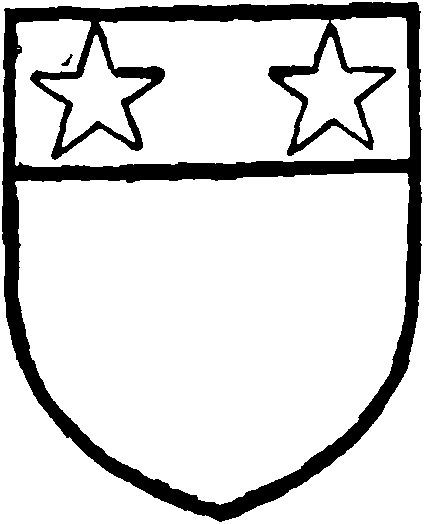
St. John. Argent a chief gules with two molets or.
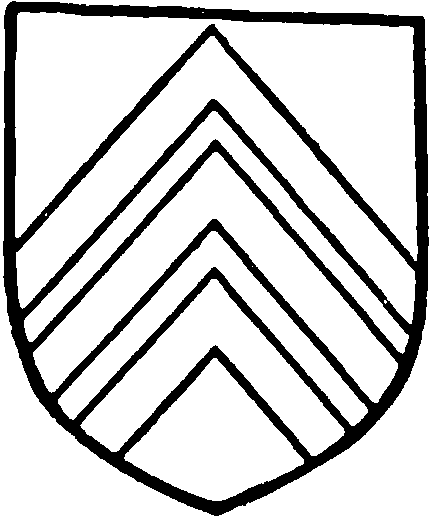
De Clare. Or three cheverons gules.
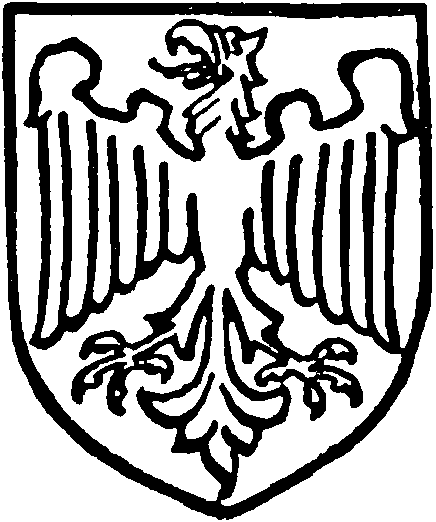
Monthermer. Or an eagle vert.
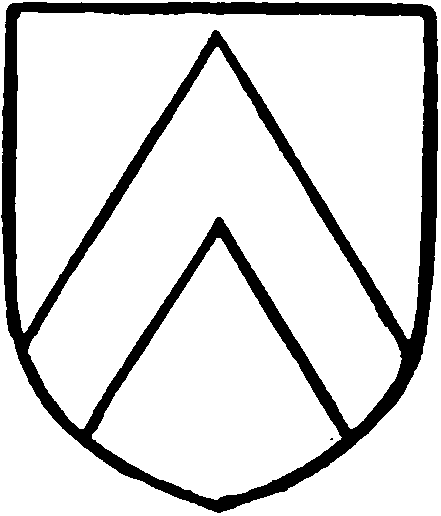
Stafford. Or a cheveron gules.
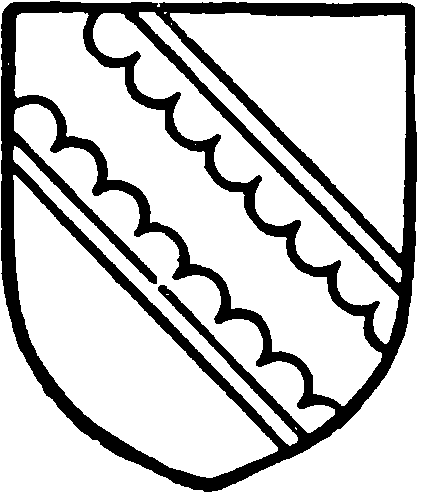
Hanbury. Or a bend engrailed vert with plain cotises sable.

Wyndham. Azure a cheveron between three lions' heads razed or.
The sub-manor of CORHAMPTON was in origin the third part of the two knight's fees granted to Adam de Corhampton by his uncle Nicholas de Corhampton. (fn. 49) The grant is given in great detail, and special mention is made of the third part of the mill and the third part of the fishery there. Adam gave his uncle thirty marks, and moreover granted for himself and his heirs that they would give nothing of the said tenements in religionem, nor alienate them in any way whereby Nicholas and his heirs should lose their service from the tenements. Shortly afterwards Adam sold this third part to Peter des Roches, bishop of Winchester, for sixty marks of silver. (fn. 50) The latter soon afterwards granted this land in free alms to the abbey of Titchfield, which he had founded in 1231, together with his wood called 'Cherlewood,' which he had purchased from Jordan de Walterville. (fn. 51) William de Clare in his confirmation of the grant calls the land 'the third part of the manor of Corhampton.' (fn. 52) In return for this confirmation he received £10 and the third part of the mill of Corhampton, which henceforward belonged to the chief manor. (fn. 53) The abbey continued to hold this third part, which developed into a separate manor, (fn. 54) until its dissolution in 1537, (fn. 55) when the king granted it to Thomas Wriothesley, (fn. 56) who was created earl of Southampton three days before the coronation of King Edward VI. During his lifetime a certain Isabel alias Alice Collen alias Collins held the manor at farm for the annual payment of £4. (fn. 57) The earl died seised of the manor in 1550, leaving a son and heir Henry, aged three, (fn. 58) and under his will the manor of Corhampton was left to King Edward VI to hold during the minority of his son, 'for a remembrance of my duty towards my sovereign lord, and for the great benefits that I have received of his most noble father of famous memory, the late King Henry VIII.' (fn. 59) Henry, second earl of Southampton, died seised of the manor in 1581, his heir being his son Henry, aged eight, (fn. 60) who, seventeen years later, conveyed it to William Fisher, William Petty, and Henry Collins in trust for Nicholas Collins and Clara his wife during their lives, with remainder to their eldest son William and his issue and their second son Henry successively. (fn. 61) Nicholas Collins died seised of the manor in 1601, his heir being his son William, who was aged twenty-two in 1611. (fn. 62) Some time between 1655 and 1669, in a dispute between this William and Henry Chroucher, lord of the main manor of Corhampton, concerning 'the long meadow near the vicarage-house,' (fn. 63) the following statement was made concerning the manor of Corhampton: 'The manor after it was divided lay all in common fields, and about a hundred years since was by joint consent divided equally and many exchanges made of each other's lands for convenience to each parties, and was then inclosed with quick-set hedges and hath so continued to this time.' (fn. 64) William Collins died without issue in 1669, aged eighty years, and the manor passed to 'his brother's daughter who was married to one Mr. Collins of Sussex.' (fn. 65) The manor continued in this family of Collins for about a hundred years. In 1750 there was a dispute between Henry Collins and Henry Wyndham, lord of the chief manor of Corhampton, as to who was really lord of the manor of Corhampton. (fn. 66) In October of that year, to end disputes, they agreed that 'they and their heirs, tenants, and assigns should futurely hold and enjoy the same lands, woods, commons, rights, and privileges as their ancestors or predecessors respectively had formerly done. And 'twas furthermore particularly agreed that all timber-trees and other trees growing and to be growing on the commons or waste-grounds should be the joint property of them the said Henry Collins and Henry Wyndham and their respective heirs and assigns, and should not be cut, sold, or converted without each party's consent, and also that all estrays should be equally shared and divided between them.' As a confirmation of this agreement the two lords then sold some beech-trees standing on waste-land in Corhampton to farmer Richard Matthews of Corhampton for six guineas, which they divided equally between them. Henry Collins by will left the manor and rectory to Edward Horner and William Horner. The latter, who survived his brother, in his turn devised them to Richard Richards (fn. 67) some time before 1768. (fn. 68) Richard by will directed that the manor and rectory should be sold, and the purchase money divided among his three sons, Henry Richards of Burton (co. Dorset), Richard Richards of Bishop's Waltham, and William Richards of Winchester College, and his daughter Elizabeth, wife of Thomas Jonas of Bishop's Waltham. (fn. 69) The property was sold in 1777, the purchaser being Henry Wyndham, lord of the chief manor of Corhampton. (fn. 70) From this time the two manors have merged.
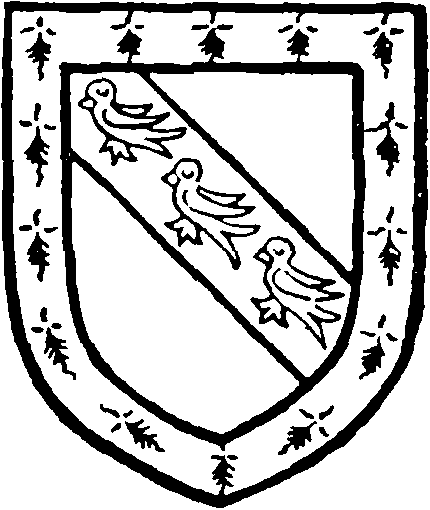
Collins. Gules a bend or in a border ermine with three martlets azure on the bend.
CLEVERLY
CLEVERLY (Claverlegh, xiii cent.; Claverley and Claverle, xiv cent.; Cleverlys, xviii cent.). Franklin Farm in the extreme west of the parish and Cleverly Wood on the borders of the parishes of Bishop's Waltham and Corhampton mark the site of the tenement, consisting of a messuage and a carucate of land, which the family of Cleverly held of the abbot and convent of Titchfield, as of their manor of Corhampton, by the rent of half a pound of cummin at Michaelmas, and suit of court every three weeks. (fn. 71) A Thurstan Cleverly is mentioned as early as 1233. (fn. 72) and the name of Cleverly frequently occurs in the court rolls of Corhampton. In a court roll of 1372 it appears that at the court held at Michaelmas of that year Philip Cleverly did homage for lands held of the abbey in Cleverly, and claimed right of way to the pasture of Cleverdown. (fn. 73) In 1413 John the son of Philip had a dispute with the abbot of Titchfield, concerning the relief. (fn. 74) John Cleverly in 1538 was holding a free tenement of Thomas Wriothesley as of his manor of Corhampton by the rent of a pound of cummin. (fn. 75) He was succeeded by his son and heir Thomas, who in the reign of Elizabeth petitioned Sir Nicholas Bacon to force his stepmother Elizabeth to restore a messuage at Cleverly and 112 acres of arable land and 10 acres of wood in Lomer, Corhampton, and Bishop's Waltham, which she had held since his father's death. (fn. 76) Towards the end of Elizabeth's reign this holding seems to have passed into the hands of William Fisher. (fn. 77) It remained in the Fisher family until 1741, in which year Forbes Fisher sold it to Henry Collins, lord of the sub-manor of Corhampton. (fn. 78) It was included in the sale of the sub-manor to Henry Wyndham in 1777, under the description of a 'messuage and tenement called Cleverleys alias Franklins and fifteen closes of arable land and pasture land containing 160 acres belonging to it situated in Corhampton,' (fn. 79) since which time it has formed part of the manor of Corhampton.
In 1294 the abbot and convent of Titchfield obtained a grant of free warren in their demesne lands of Corhampton, (fn. 80) and this grant was confirmed in 1424. (fn. 81) A free warren and park are also mentioned in the grant of the chief manor to Thomas Hanbury in 1611. (fn. 82)
There were two mills worth twenty-two shillings in Corhampton at the time of the Domesday Survey, (fn. 83) one of which seems to have soon fallen into decay, and after the reign of Henry III only one is mentioned. One-third of the mill 'which is before the church of the vill' was included in the grant of the third part of the manor of Corhampton to Titchfield Abbey, (fn. 84) but was given up to William de Clare in return for his confirmation of the grant of the third part of the manor to the abbey. (fn. 85) The mill was usually farmed out at forty shillings a year, but it was very often out of repair, and there are frequent references to expenses incurred in repairing it. (fn. 86) The present water-mill of Corhampton probably marks the site of this mill, for it certainly stands 'before the church of the vill.' There was also a several fishery in Corhampton which is mentioned as early as the reign of Henry III. (fn. 87) The River Meon still affords good trout-fishing.
King Ethelred the son of King Edgar and Queen Estrilda granted LOMER (Lammere, xi cent.; Lomere, xiv cent.; Lowmer, xvi cent.), with three hides and a church, to Hyde Abbey. (fn. 88) In the reign of Edward the Confessor the abbot granted it to a certain Alward to hold for the term of his life in return for an annual payment of six sestiers of wine, (fn. 89) and at the time of the Survey it was held by Ruald of the abbey, no doubt for a like payment. (fn. 90) The manor continued to be held until the end of the fourteenth century by various tenants of the abbey by an annual payment in wine. (fn. 91) In the reign of Henry III Geoffrey de Lomer held the manor of the abbey. (fn. 92) Geoffrey was succeeded by his son and heir Robert de Lomer. (fn. 93) John de Lomer was holding in 1316, (fn. 94) while Ellis de Lomer was at one time lord of Lomer (fn. 95) —most probably at the end of the thirteenth century. In 1317 a messuage, one carucate of land and 5 acres of wood in Preshaw and Lomer were settled on Thomas de Mareis (fn. 96) and Florence his wife. (fn. 97) Thomas died between 1346 and 1359, for in the latter year by fine between Walter de Haywode and Joan his wife and Laurence de Mareis a messuage, 2 carucates of land, 200 acres of pasture, 5 acres of wood, and 50s. rent in Lomer, Lomer Turville, Preshaw, Exton, and Warnford (fn. 98) were settled on Laurence for life to be held of Walter and Joan and the heirs of Walter for the rent of a rose. (fn. 99) In 1392 the same lands were held by Joan de Haywode and Margaret de Mareis for life of the inheritance of Thomas le Warenner and John Hampton, who in that year obtained licence from the king to grant the reversion of them after the death of Joan and Margaret to Hyde Abley. (fn. 100) The manor of Lomer remained the property of the abbey until the Dissolution, when it was farmed out at £4 8s. 10d. to John Croppe and Thomasina his wife. (fn. 101) In 1542 Henry VIII granted it to Sir William Paulet Lord St. John and Elizabeth his wife, (fn. 102) who three years later sold it to John Lorimer and Agnes his wife. (fn. 103) John died seised of the manor in 1546 leaving a son and heir John aged two, (fn. 104) who was followed on his death in 1578 by his son and heir Roger aged three, (fn. 105) who dealt with the manor by fine in 1605. (fn. 106) Lomer next became vested in Lady Anne Sandys widow of William Lord Sandys, who in 1634 settled it upon her grandson John Stewkley, the younger son of Sir Thomas Stewkley by her only daughter and heir Elizabeth. (fn. 107) It remained in his possession until 1677, in which year he joined with his sons William and John in selling it to his nephew Sir Hugh Stewkley, bart., (fn. 108) who in 1707 sold it to David Bone, timber merchant. (fn. 109) David, who died a year later, by will left the manor to his wife Mary to hold as long as she should remain single, with remainder on her death or marriage to his daughter Mary. His widow married — Lacey as her second husband, and consequently Lomer passed to David's daughter Mary, who died unmarried in 1732. By her will (proved 8 April, 1732) she left the manor to her mother Mary Lacey for life, with remainder to William Moore and his issue, with contingent remainder to her half-sisters Mary and Catherine Lacey and their issue, with contingent remainder to her cousins John, William, Robert, and Hawkesworth Cleverley and her cousins John, Mary, Sarah, Joan, and Anne Wilkes. (fn. 110) Mary Lacey died in 1735, and the manor then passed to William Moore, who died without issue about 1750. In his lifetime Mary and Catherine Lacey, John, Robert, and Hawkesworth Cleverley, and Mary, Sarah, Joan, and Anne Wilkes had all died without issue, and consequently the manor was divided between William Cleverley and John Wilkes. (fn. 111) William Cleverley died intestate, and his moiety of the manor passed to his daughter and heir Sarah the wife of John Clewer before September, 1766, who by will proved 3 May, 1777, left it to her son John. Four years later he sold it to John Griffin younger son of Sarah Griffin, who had inherited the other moiety from his uncle John Wilkes in 1766. (fn. 112) John Griffin sold the whole manor in 1782 to Admiral Mark Robinson, (fn. 113) who sold it ten years later to Henry Penruddock Wyndham, (fn. 114) since when its descent has been identical with that of the manor of Corhampton.
The manor of LOMER TURVILLE (Lammer Turvill, Launver Turvill, and Lamere Turvyle, xiv cent.; Lomers Turvill, xvi cent.) was held partly of the abbot and convent of Hyde as of their manor of Lomer, and partly of the St. John family as of their manor of Warnford. The part which was held of the St. Johns was valued sometimes at 20s. (fn. 115) and sometimes at 10s., (fn. 116) and comprised 12 acres of land in 1392, when it was held of Isabel de St. John as of her manor of Warnford for 1d. rent, and by her of the abbot and convent. (fn. 117)
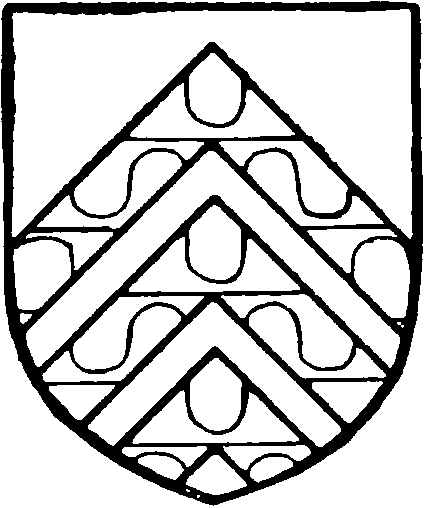
Turville. Gules three cheverons vair.
The manor was in the possession of the Turville family in the thirteenth century, and perhaps earlier. At about this time David Turville was lord, (fn. 118) and at the beginning of the thirteenth century the manor belonged to William Turville, passing on his death to Maurice Turville, who in 1222 granted to Thomas de Chancumbe and Amice his wife a reasonable dowry for Amice from the free tenement which belonged to William her former husband in Lomer. (fn. 119) Maurice seems to have been succeeded by Peter Turville, whose tenants in 1274 withdrew the suit which they owed at the hundred court of Meonstoke. (fn. 120) In the early part of the fourteenth century the Turville family seem to have parted with their property, which fell into two moieties. In 1326, by fine, two messuages, 24 acres of land, and 18s. rent in Lomer and Lomer Turville were settled on Thomas Mareis and Florence his wife, (fn. 121) who already held Lomer and Preshaw (q. v. supra), and as late as 1346 Thomas Mareis was holding in Lomer a portion of the tenth part of a knight's fee which had belonged to David Turville. (fn. 122) The other moiety passed to John de Basing, who in 1329 was holding one fee in Lomer of John de St. John. (fn. 123) He died before 1343, in which year John de Basing, son and heir of Sir John de Basing, renounced his claim to all the lands which his mother Joan was holding in Lomer Turville. (fn. 124) In 1346 Joan, widow of Sir John de Basing, was still holding the remainder of the tenth part of the knight's fee which had belonged to David Turville in Lomer. (fn. 125) By 1392, however, the whole of Lomer Turville had become merged in the manors of Lomer and Preshaw, forming part of the property which was then held by Joan de Haywode and Margaret de Mareis for life, of the inheritance of Thomas le Warenner and John Hampton. (fn. 126) Although it no longer had any existence as a separate manor, the name was for some time preserved. Thus in the Ministers' Accounts for 1539 mention is made of a rent of 10s. from one toft and 22 acres called 'Lomers Turvill,' lately in the tenure of John Papworth and William atte Noke, and now held by Alexander Seward by copy of court roll. (fn. 127)
By 1381 the abbot and convent of Titchfield had a considerable amount of property in LOMER belonging to their church of Lomer which had been granted to them by successive lords of Lomer. (fn. 128) At the Dissolution this property was most probably included in the grant of the sub-manor of Corhampton and the advowson of the church of Lomer to Thomas Wriothesley.
PRESHAW
PRESHAW (Presshawe, Presthawe, and Preishawe, xiv cent.) was probably included in the entry under Lomer in Domesday Book, (fn. 129) and seems to have been held of Hyde Abbey for the same service and by the same tenants as Lomer. (fn. 130) At the time of the dissolution of the abbey it was worth £8 8s. 8d. by the year, which sum was made up as follows:—£1 4s. rents of assize, (fn. 131) £1 18s. rents of customary tenants, (fn. 132) and £5 6s. 8d. farm of the site of the manor. (fn. 133) Preshaw was granted with Lomer to Sir William Paulet, Lord St. John, in 1542, and followed the descent of Lomer until 1707, in which year Sir Hugh Stewkley, bart., sold it to Robert Kirby. (fn. 134) The latter, by will dated 23 August, 1721, left it to his cousins, John Waight, John Binsted, and Peter Newlyn, in trust, to dispose of it for the payment of his debts and various legacies to his brother-in-law Augustin Fisher, his nephews Henry and John Fisher, and his nieces Mary the wife of George Graham, Frances the wife of Joseph Freeman, and Katherine the wife of John Smith. (fn. 135) John Long purchased the manor from them in 1728 for £7,600. (fn. 136) He died unmarried on 23 November, 1742, having by will devised Preshaw to his brother Walter for life, with remainder to John the eldest son of Walter by his second wife Philippa Blackall. (fn. 137) The manor remained in the Long family until 1898, (fn. 138) when Mr. Walter Long sold it to Baron de Bush, who sold it on 1 March, 1901, to Captain Reginald Harry Cholmondeley, the present lord of the manor. (fn. 139)
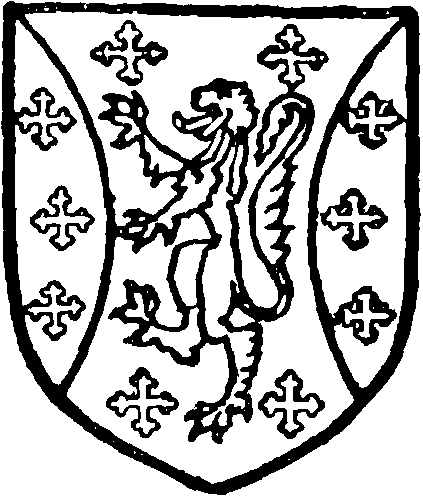
Long of Preshaw. Sable a lion argent between four crosslets or and two flaunches or with three crosslets sable in each.
Preshaw House, set in a beautifully-timbered park on the southern slope of Millbarrow Down, is a picturesque gabled house of at least three dates, though owing to careful copying of the older work by the later builders, this is not very noticeable at first sight. Tradition points to an early occupation of the site, but there are no architectural features in the existing building which can claim a more remote date than 1630–40. The principal front is to the north, and has five gables, the two towards the east being early eighteenth-century additions, following the design of the other three. These latter formed the north front of the seventeenth-century house, which had a central block between projecting wings, after the mediaeval fashion, with a gabled porch over the main entrance at the north end of the central block, and is so shown in a coloured drawing of 1720, a copy of which is preserved in the house. It is of two stories with an attic, built of flint masonry with red-brick dressings, and having Ionic pilasters at the angles and centres of the projecting wings, while the central block is divided into three divisions by the same means, and the stories are marked by moulded brick strings with dentil courses beneath them. The windows in the gables have cut brick labels, and the gable copings, also of brick, are plainly recessed, and less effective than the other details of the building. The roofs are red-tiled and the chimney-stacks simply treated, adding little to the architectural effect. The windows have had wooden casements from the first, but the old woodwork and the latticed panes have given place to modern frames. There is a second porch on the west side of the house, the masonry of which seems to belong to the seventeenth-century work, but the position is unusual, and the doorway itself of comparatively modern date. Probably the building was not a porch in the first instance. The eighteenth-century additions, in the form of a block added to the east of the older house, follow it in all details except in being entirely faced with brick and showing no flint work. In the early years of the nineteenth century a set of rooms was added to the south side of the house, doubling its thickness from north to south. Here also the details follow the older work for the most part, but are worked in cement instead of brick, and the south front is faced with cement marked with false masonry joints. The whole of the interior of the house seems to have been remodelled at this time, with finely-worked plaster cornices and ceilings far superior to the unattractive exterior of this date. The hall occupies the traditional position, with the entrance doorway at its lower end, but is merely a one-story vestibule, and a good example of the nearly completed transition from the mediaeval to the modern treatment.
CHURCH
The church of CORHAMPTON, which has no known dedication, is a small building with chancel and north vestry, nave and south porch, and a wooden bellturret on the west gable of the nave.
Except the vestry and porch, and the east half of the chancel, it dates from pre-Conquest times, and perhaps belongs to the first half of the eleventh century. The features of this date which still exist are the chancel arch, the north doorway of the nave and part of the south, the external pilaster strips on the nave and chancel, the angle quoins of the nave, the sun-dial east of the south porch, and perhaps the openings for bells high in the west wall. The upper part of the west gable has been rebuilt, the roof renewed, the north door blocked, and the south nearly entirely removed to make way for a later doorway, while the east half of the chancel has given way at some time and been rebuilt in brick, and is probably a little shorter than at first. The chancel measures 10 ft. 6 in. east to west by 14 ft. within the walls, and has a modern east window of three lights, and a narrow thirteenth-century lancet at the south-west, while at the south-east is a stone seat with arms, perhaps of thirteenth-century date, and formerly serving as a sedile. Externally a length of original walling remains at the south-west, of flint rubble with a pilaster strip of Binstead stone set in it. The chancel arch, 7 ft. 9 in. wide by 13 ft. high to the crown, is semicircular, of one square order, with plain imposts, and has on the west face a projecting rib framing the arch, and formerly running down the jamb. At its apex is a small projecting keystone. The nave, 36 ft. by 17 ft. 3 in. (17 ft. 9 in. at the west), is 16 ft. high to the plate level, not having the excessive proportion of height to breadth so often found in early churches. It has no traces of original windows, being lighted towards the east by single lancet windows on the north and south, while a third is inserted in the blocking of the north doorway. This doorway is the most interesting architectural feature of the church, and has a plain semicircular head and jamb cut straight through the wall without a reveal. A plain rib frames head and jambs on the outside, having imposts at the springing with characteristic horizontal mouldings, and stepped bases. The doorway is disproportionately high to the wall in which it is set, and from the highest point of the rib which frames it a pilaster strip runs to the eaves. The south doorway was of the same description, but nothing but the rib framing its arch is now to be seen, with the pilaster strip over it. In the north and south walls of the nave are pilaster strips, two in each, symmetrically set at an average distance of 9 ft. from the east and west angles, and in the middle of the west wall is another. All rise from a projecting base course, and at the eaves were stopped by a horizontal course of wrought stone, which is continued across the west gable, having above it the two squareheaded openings which seem to have held bells in the first instance. The angles of the nave have quoins of long and short work, all these details being worked in Binstead stone, except the openings in the western gable. The heads of these latter have lately been rebuilt in flint and tiles. The grooves made in their jambs by the bells can now be clearly seen from the west gallery in the nave. An unusual feature is the treatment of the bases of the pilaster strips; they spring from a group of three simply-treated scrolled leaves or brackets, resting on the base-course, the best preserved example being that to the west of the south doorway of the nave. To the east of the doorway is a square stone set in the wall carved with a circular dial, the angles of the stone being filled in with groups of three-pointed leaves; it is probably contemporary with the wall in which it is set.
The south doorway has a pointed arch with a wide hollow chamfer, and is probably of thirteenth-century date; a modern masonry porch is built over it, in which is now preserved an altar slab of irregular shape, 5 ft. long by 1 ft. 10½ in. wide at the north end, and 1 ft. 7 in. wide at the south. Till lately it served as a seat under the yew tree south of the church, but in the earlier part of the last century was in the floor of the church. It is notable for having, besides the five usual crosses, a sixth on the front edge, in the middle of its length.
The nave walls have gone over southwards, the greatest lean being of 10 inches in the middle of the south wall, and near the west angle of the same wall a large raking buttress of brick has been built. The nave roof retains some old timbers, perhaps of fifteenth-century date, and the wooden bell-turret has lately been renewed, with details copied from some early seventeenth-century woodwork found in it at a late repair. A good deal of the internal plastering is ancient, and on the north, south, and west walls of the nave are a number of incised lines, done when the plaster was fresh, chiefly in the form of circles containing crosses formed by intersecting arcs of similar circles, a detail commonly used in consecration crosses. Here there seem to be too many of them to be thus identified—there are three side by side on the north wall—and they are probably decorative. Some very interesting remains of decorative painting have been lately uncovered on the west face of the chancel arch, and on the north, south, and west walls of the chancel. The latter show a band of figure subjects high on the wall, and painted drapery below, in which are set square panels inclosing circles, which contain pairs of birds set back to back. The figure subjects are unfortunately very faint, but enough remains to show that they are of considerable merit; the best preserved are at the east of the south wall, a female figure standing before a seated bishop.
The altar-rails in the chancel are of the eighteenth century, but most of the woodwork in the church, including the west gallery, is modern. A new set of pews is recorded to have been made in 1636, and a little carved work of this date is preserved.
The font at the west end under the gallery has a curious small round bowl, with a line of cable moulding round the middle; the detail suggests a twelfth-century date, but the small size and general reworking of the surface make its attribution to so early a period doubtful.
There are two bells, the treble inscribed 'In God is my hope, 1619, I.H.,' and the second dated 1828.
The church possesses a communion cup, unmarked, but of c. 1570, with conical bowl and expanding lip, and a saucer-shaped cover paten. Both are very roughly engraved with scrollwork and dotted ornament, and are probably of local make. There is also a standing paten of 1791, given in 1792 by Dr. John Chelsum, rector of Droxford, a plated flagon of old Sheffield ware, and an alms dish of 1874.
The earliest preserved book of registers is a copy, made about 1760, the baptisms beginning in 1665, the marriages 1667, and the burials 1695. Marriages end at 1750, but the other entries continue to 1812. The second book is the printed marriage register, 1754–1812.
ADVOWSON
There was a church in Corhampton at the time of the Domesday Survey, (fn. 140) the advowson of which followed the descent of the manor until about the middle of the thirteenth century, when Robert de St. John, overlord of Corhampton, granted it in free alms to the abbey of Titchfield. (fn. 141) In the reign of Edward I John de St. John, son and heir of Robert de St. John, attempted to recover the advowson, granting the presentation for one turn only to the abbey of Titchfield in 1288. (fn. 142) The abbot, however, produced the charter of Robert de St. John, which John was ultimately forced to confirm. (fn. 143) The advowson thenceforward followed the descent of the sub-manor of Corhampton (q.v.).
The living is at the present day a vicarage, net yearly value £42, including 70 acres of glebe situated in the parish of Clanfield, in the gift of Mrs. Pleydell Bouverie-Campbell-Wyndham.
The annual value of the church was £6 13s. 4d. in the thirteenth century, (fn. 144) and the rector, Henry de Guildford, resigned the living in 1291 'on the account of the poverty of the same because it is hardly sufficient to the support of one chaplain.' (fn. 145)
In 1271 by deed between the abbot of Titchfield and John de Petersfield, rector of the church of Corhampton, it was agreed that the canons should be for ever free from the payment of all tithes coming from the lands they already possessed in the parish, paying instead to the rector half a mark every year, but that they should pay tithes from all lands subsequently acquired. (fn. 146)
There was also a church in Lomer at the time of the Domesday Survey (fn. 147) which Geoffrey de Lomer, lord of the manor of Lomer, granted to the abbot and canons of Titchfield in the reign of Henry III. (fn. 148) The church was appropriated to the abbey some time between 1282 and 1304. (fn. 149) Its annual value is given as £4 0s. 7d. in 1381. (fn. 150) The advowson remained in the hands of the abbot and convent until the Dissolution, when it passed to the king, (fn. 151) who granted it, together with the manor and advowson of Corhampton, to Thomas Wriothesley, (fn. 152) from whom it passed to Henry Wriothesley, earl of Southampton. (fn. 153) In the inquisition taken on the death of Thomas in 1550, it is stated that the rectories and churches of Corhampton and Lomer had been united, annexed, consolidated, and reduced to one by the king. (fn. 154) They must have been separated again, however, in the seventeenth century, for in 1635 Lady Anne Sandys settled the rectory and the advowson of the vicarage of Lomer upon her grandson John Stewkley. (fn. 155) The advowson subsequently followed the descent of the manor. (fn. 156) It was dealt with by fine as late as 1783, (fn. 157) but only the site of the church now remains. Bishop Stratford (1323–33) ordered the church to be re-consecrated because it had been polluted by the shedding of blood. (fn. 158)
Close to Preshaw House is a chapel built by the late Mr. Walter Jervis Long, and opened at Christmas, 1864. Divine service is held here twice a day on Sundays.
CHARITIES
In 1669 William Collins by will proved in the P.C.C. gave to trustees a messuage, then newly erected as a schoolhouse, and garden containing one acre, for the use of a schoolmaster performing the office of minister. The testator also directed that a sum of £450 should be expended in the purchase of freehold lands of the clear yearly value of £22 to be paid to such schoolmaster, for the teaching of three poor boys of Corhampton, two of Meonstoke, one of the parish of Exton, and two of Droxford. By deed dated 29 September, 1677, in consideration of £450 (with £10 added by Dorothy Collins the testator's widow), a rent-charge of £22 per annum issuing out of land known as Chalfryth, otherwise the Chalverys, at Nursted, in the parish of Buriton, was purchased and settled upon the trusts of the will.
By a scheme of the Charity Commissioners of 27 July, 1900, the old school buildings and gardens may be occupied by the vicar at a yearly rent of £10, and the yearly income of the charity is directed to be applied in the advancement of education by way of prizes or rewards to boys resident in the four interested parishes qualified as therein mentioned, or in payments to encourage continuance at school of such boys, or in exhibitions, evening classes, or technical instruction. The official trustees hold a sum of £40 Local Loans 3 per cent. stock, which under the provisions of the scheme is to be maintained as a repair fund.
By deed 1872 a national school was founded for this parish and Exton. (fn. 159)
